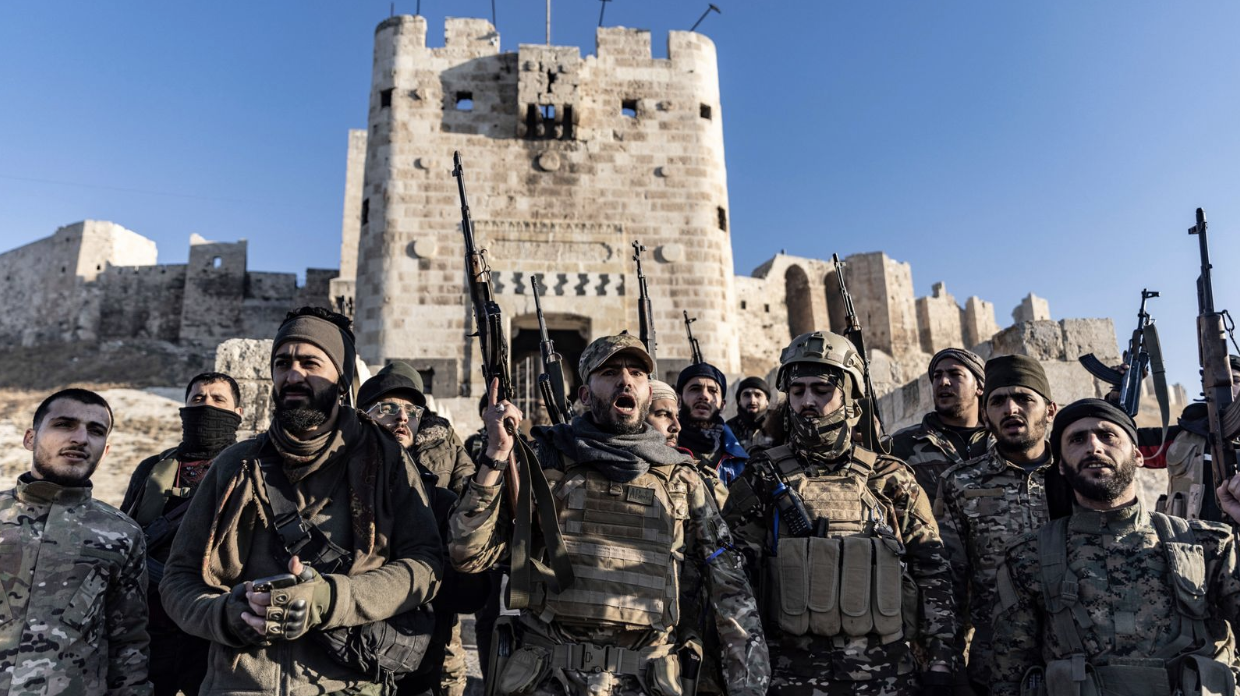Photo via Sky News
***
On September 24, 2025, Ahmed Al-Sharaa became the first Syrian head of state to address the United Nations General Assembly since 1967, symbolically marking the end of the Syrian Ba’athist era. Stewarding the Hay’at Tahrir al-Sham(HTS)-led transitional government, Al-Sharaa’s power base lies in the western regions of Syria. His speech promised a new stage in Syrian history, alongside an end to the sectarian violence that has plagued the nation since the beginning of the civil war.
Despite his lofty ambitions and globe-trotting press tour, conflict persists in the region. Just one day prior to Al-Sharaa’s speech, the Syrian Ministry of Defense (MoD) conducted drone strikes in the Syrian Democratic Forces (SDF) controlled town of Dayr Hafir, continuing a recent series of clashes in the Aleppo Governorate of Syria. This recent escalation of conflict in one of the state’s most populous regions highlights the growing concern regarding the stagnating integration proceedings between Damascus, the capital of Syria, and the SDF, which serves as the military wing of the Democratic Autonomous Administration of North and East Syria (DAANES) in Syrian Kurdistan.
Stagnation Prompts International Concern
Although the SDF and Damascus indicated a path to integration in March, little notable progress has been made, sparking concern from neighboring Turkey. Ankara, the capital of Turkey, designates the People’s Protection Units (YPG), a key militant group among the SDF, as the Syrian wing of the now-defunct Kurdistan Workers’ Party (PKK). Turkish policy in the region has sought to suppress Kurdish sectarian movements, of which it counts the SDF, despite the organization itself asserting its now-secular status and citing nominal US-backing.
Following the fall of the Assad regime, Turkey assumed a critical position in Syria. Some analysts assert that Ankara played a role in the regime change.
Syria has also played a role as a battleground for Turkey and Israel’s growing rivalry. Israel has indicated a desire to establish a demilitarized zone in southern Syria. The two powers have been at odds, in part due to Turkey’s continued support for Hamas and condemnation of Israel’s ongoing genocide in Gaza. Concerns have arisen that the stalled SDF merger may lead to escalation between the two countries’ capitals .
What’s Next for Al-Sharaa?
The new transitional government has successfully appealed for international recognition of its legitimacy; however, without refocusing on the primary issue of assimilation with the SDF, conflict is unlikely to diminish. Turkey has indicated that an autonomous Kurdish-led region is incompatible with national interests, so unless Al-Sharaa successfully subsumes the SDF into his regime, Ankara is likely to escalate conflict in the Northeast and possibly against Israeli forces in the South.
Israel continues to assert its authority as a protector for the Druze minority in Syria. The two states came into conflict over the establishment of an Israeli corridor in the South. Furthermore, Al-Sharaa’s expressed support for Gaza may lead to a further breakdown of relations.
As sectarian violence continues to envelop the nation, Damascus must seek to reconcile its alignment with Turkish and Kurdish factors. Integrating the DAANES into the transitional government is essential for retaining national sovereignty, especially in the wake of continued Israeli surges into the Golan Heights of Syria.
As the year approaches its end and the expectation of reunification looms, Al-Sharaa must do everything in his power to secure administrative integrity and security. In the wake of increased attacks in third-party nations, protecting key leaders throughout Syria must take priority. Only through intentional cooperation with mutual benefit in mind will Syria regain its independent statehood, without foreign actors transforming the region into a battleground for yet more proxy warfare.
***
This article was edited by Thomas John McCarthy and Madison Boyd.
